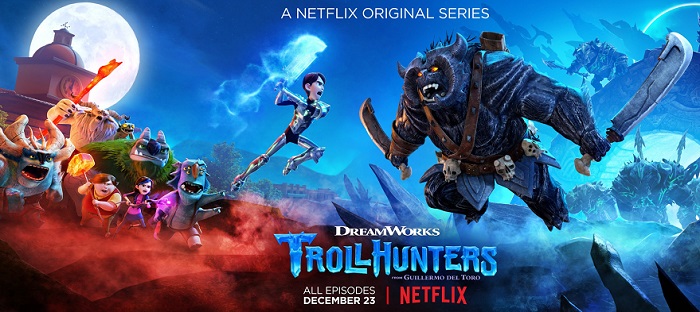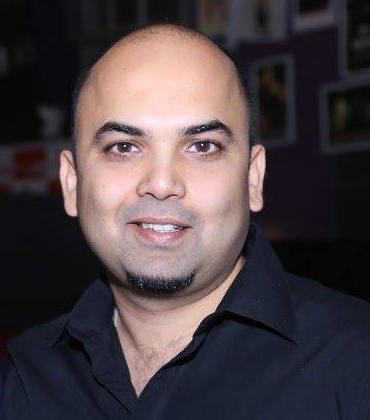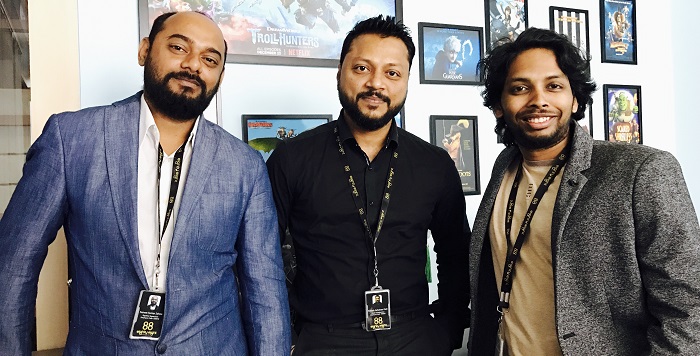The place is huge, dimly lit with yellow spherical lamps hanging from the ceiling, music playing on the speakers in the otherwise silent work-area and people with their gazes focused on the screen, immersed in work. This is the environment at 88 Pictures, one of the studios that is working (now on season two) on DreamWorks Animation’s and Guillermo del Toro’s animated fantasy adventure Trollhunters.
88 Pictures worked entirely on three episodes from season one of the Annie Award-winning TV series. AnimationXpress got in touch with the team to get more insights on the work flow, production, pipeline and animation of the Trollhunters project.

It all starts with production…
When the team got the project in hand, the production team began planning – the structure, requisite software, recruitment as per requirement and report structures to communicate with the client (DWA) on a regular basis. Since Rakesh Patil – head of production at 88 Pictures – had spent five to six years with DWA, it was not an arduous task for him to figure out what they needed in terms of production. What they had to keep in mind however was to maintain the level of the show, which was already high.
Adhering to the deadlines, or “completion date” as Patil likes to call it, is always a challenge in TV shows, but not at 88 Pictures. The resources were planned and channelised in a way that work was always completed on date. They use the term CBB – Can Be Better. “The shot is approved, everything is great, but if we have time, we see how we can make it better.” Keeping the budget under wraps, he said that they’ve never compromised on the creative standpoint.
“We have artists who are always hungry from a learning perspective. That is why, they never complained about working on a shot after it was already approved.”
Saswat Sahoo built a pipeline with robust asset management and production tracking system. They knew that this project was of a huge scale. Hence, “we had to build a pipeline that was scalable and could handle the volume of data that came with Trollhunters,” Sahoo said. Multiple assets came in everyday. They therefore developed a number of Maya and Nuke tools for the animation department to handle the shots with ease.
The software used were Maya, Houdini, Arnold, Nuke and Shotgun. “Our pipeline is very tightly integrated with Shotgun,” he added.

Animation director Manish Kumar revealed that getting the story moving was completely under their hands but they worked closely with the director and the animator at DreamWorks Animation. They had shot specific video calls to know the vision of the series director, Rodrigo Blaas. Blaas was open to ideas, and “everybody wanted to make a great story, so if the idea made sense, we went ahead with it,” Kumar shared.
After all this, came the lighting and VFX. With 17 years of experience in this field, Rahul Nair – the lighting supervisor – believes that lighting for a TV show such as Trollhunters was a different ball game altogether. He adopted a method which was more lighting-centric than comp-centric. 80 per cent of the work was done with lighting while composting was used only to enhance the shot. “Due to this approach, we had to change our workflow, and I am happy that Milind allowed me to do so,” smiled Nair.
Mood of the lighting was based on the art work which came from the client. “We initially got references from there, but later they gave us freedom to decide the colours based on the storyline and the script.” According to Nair, Guillermo del Toro is visually oriented. “He wants to see storytelling through visuals.” They were also given a basic design theme but had the freedom to tweak it.
For lighting, they always went through the storyline and the script. They were provided with notes from the art director at DWA regarding the details of the shot. The colours were thus chosen based on the tonality of the story.
In animation industry, lighting has always been a service force while compositing handles the rest. Nair changed this approach at 88 Pictures.

Talking about Guillermo del Toro, the studio’s CEO Milind Shinde said, “He’s been so passionate about this project, that he has put his passion in every single shot.” That, for him and his team was most inspiring. “We want to be known as creatively passionate individuals.” And creatively passionate they are!
The studio head, Siddhie Mhambre maintains a culture that keeps everyone happy. “If one is happy, one can put his mind and heart in work,” Mhambre explained.
Optimistic attitude towards their work and the habit of striving to do better each day helped the team at 88 Pictures deliver shots which impressed the creator and the members at DWA. Trollhunters is just the beginning, but the studio seems prepared for everything on its way!